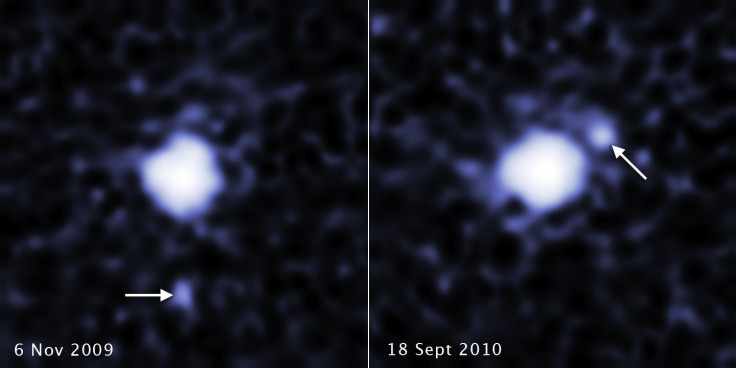NASA’s Hubble Helps Find Moon Around Third Largest Dwarf Planet In The Solar System

The largest unnamed body in the solar system, a dwarf planet provisionally called 2007 OR10, has been found to have a moon of its own. The discovery was made using data from three space telescopes, including Hubble, NASA’s Kepler and the now inactive Herschel Space Observatory (HSO) which was operated by the European Space Agency (ESA).
While the exact definition of a dwarf planet is still somewhat contentious, NASA refers to nine objects in that classification, of which only Ceres is in the Asteroid Belt between Mars and Jupiter, with the rest residing much farther out, in the Kuiper Belt beyond Neptune. The discovery of moon around 2007 OR10 has implications for our understanding of how these natural satellites were formed in the early solar system.
Read: Hubble Finds Small, Dark Moon Orbiting Distant Dwarf Planet Makemake
In a statement Thursday on NASA’s website, Csaba Kiss of the Konkoly Observatory in Budapest, who is the lead author of a paper, announcing the moon’s discovery, explained: “The discovery of satellites around all of the known large dwarf planets — except for Sedna — means that at the time these bodies formed billions of years ago, collisions must have been more frequent, and that’s a constraint on the formation models. If there were frequent collisions, then it was quite easy to form these satellites.”
But these collisions don’t always produce moons. For instance, the Asteroid Belt has collisions that are destructive and produce debris that aren’t big enough to be called even dwarf planets (with the exception of Ceres, of course). That’s partially because Jupiter’s gravity speeds up the orbits of asteroids, generating violent impacts. On the other hand, if the impact velocity was too slow, it would only leave behind a crater instead of separating a chunk from the impacted body.
Speaking about 2007 OR10 and its location, John Stansberry of the Space Telescope Science Institute in Baltimore, Maryland, and part of the team that authored the paper, said in the statement: “There must have been a fairly high density of objects, and some of them were massive bodies that were perturbing the orbits of smaller bodies. This gravitational stirring may have nudged the bodies out of their orbits and increased their relative velocities, which may have resulted in collisions.”
The possibility of a moon’s existence around 2007 OR10 was first raised by observations made using the Kepler Space Telescope, which showed the dwarf planet to have a rotation period of 45 hours, which is much slower than the usual less-than-24-hours rotation period of most Kuiper Belt Objects. The team looked at data from the Hubble Space Telescope to investigate if the gravitational pull of a moon was slowing down 2007 OR10.
Two images taken by Hubble, one year apart, confirmed the presence of a gravitationally bound moon around the dwarf planet. The two images show the moon very faintly against a background of stars.
Astronomers still don’t know the exact orbit of the dwarf planet but know it is eccentric, like Pluto’s. And compared to the former planet, 2007 OR10 currently lies three times farther from the sun. Using Herschel observations, astronomers calculated the size of the dwarf planet, discovered in 2007, as about 950 miles across, while its newly discovered moon is thought to have a diameter between 150 and 250 miles.
The paper describing the moon appears Friday in the Astrophysical Journal Letters, under the title “Discovery of a Satellite of the Large Trans-Neptunian Object (225088) 2007 OR10.”
© Copyright IBTimes 2024. All rights reserved.





















